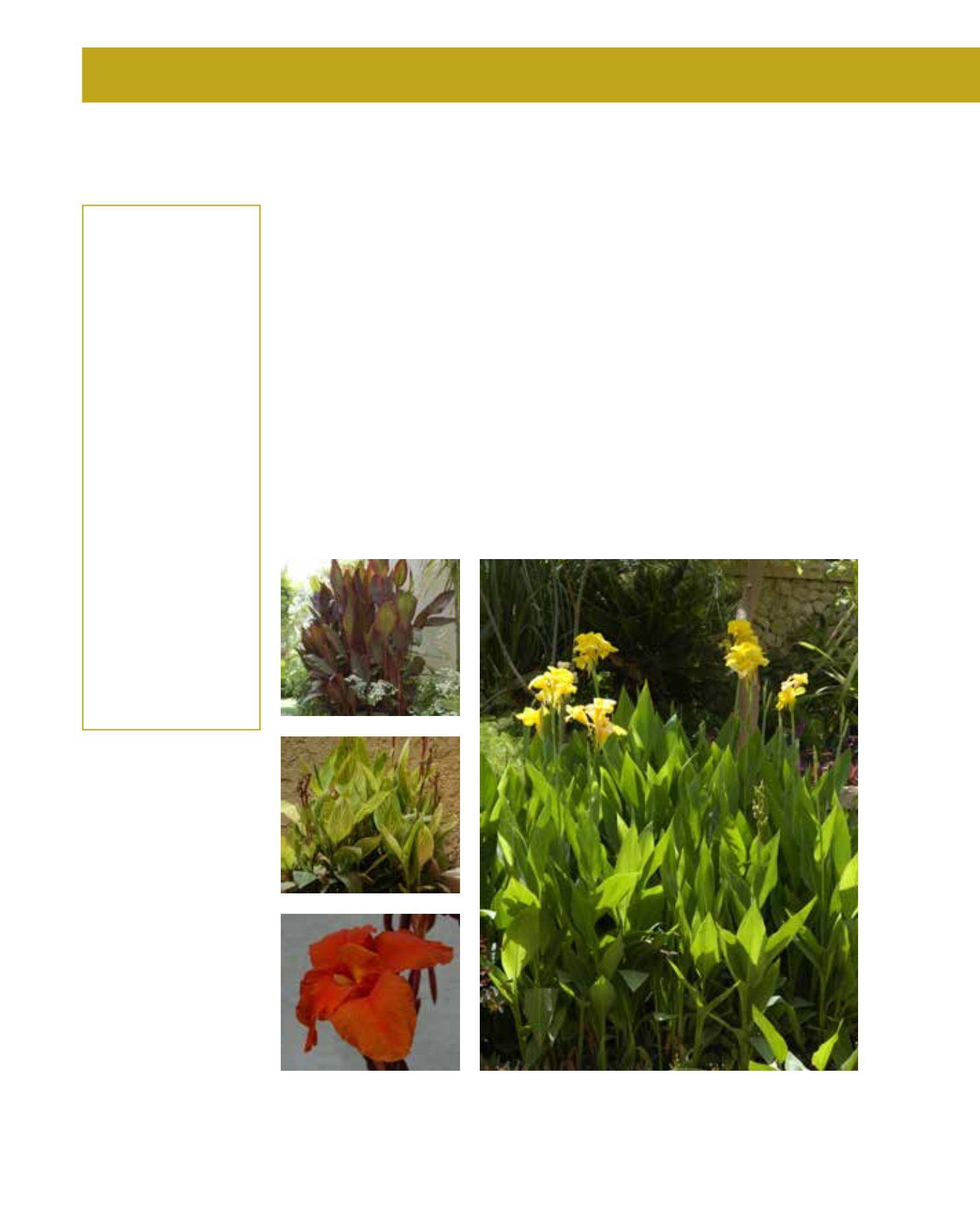

GENERAL
Origin
:
sub-tropical
Vigour
:
fairly fast
growing
Humidity
:
semi-arid, semi-
humid, very
humid
Propagation :
division, sowing
and pricking out
Maintenance :
high
CONDITIONS
Urban climate :
vulnerable
Dessication :
vulnerable
Stagnant water :
resistant
Irrigation
:
high
Salinity/ppm :
moderate (3000
ppm)
Hardiness
:
0°C
SHAPE
Type
:
perennial
Height
:
1 m-1.5 m
Spread
:
0.5 m-0.8 m
Foliage
:
evergreen
FLOWER
Colour
:
red, deep orange
Size
:
8 cm - 10 cm
Period
:
April - November
FRUIT
Type of fruit :
capsule
Fruit size
:
2 cm
Cannas are beautiful, herbaceous perennials, which provide a colourful display from red to oran-
ge and yellow, when their basic needs are met: rich soil with lots of humus and plenty of water.
They originate in the humid tropics, where the more than 30 different types of Canna are native
to Central and South America. New cultivars have been created, particularly those with almost
black foliage, or very deep-coloured red flowers and variegated leaves. An outstanding feature is
that they bloom almost non-stop throughout the year. The attractive leaves are large, broad, oval,
veined and rubbery-textured on glabrous stems; the roots are tuberous rhizomes. Exposure to
the sun is essential, although partial shade encourages stronger growth, and a lack of light may
reduce flowering. Cannas may be propagated by seed, and the fleshy rhizomes of cultivars with
their bright colours require division. All parts of the plant are frost-tender. Alkaline soils with a
high pH may cause chlorisis. C. indica can be used as a potted plant, or planted in herbaceous
borders, on the edge of ponds, and as a patio plant. They should be set about 50 cm apart and
mulching the soil helps to keep in moisture. Clumps of Cannas look more natural than massed
planting. High winds tear the leaves, and so a protected location is recommended, especially in
Arriyadh, where leaf scorch could potentially be a problem. Dead flowers should be cut off to
stimulate new flowers. Any ungainly leaves should be removed to the ground to encourage new
shoots with lush foliage.
81
Canna indica,
Cannaceae
Canna,
Indian Shot
















